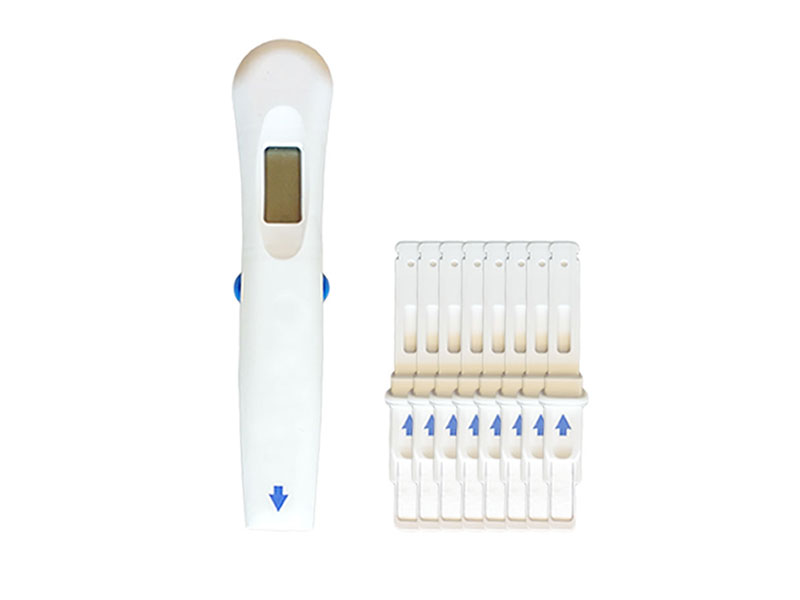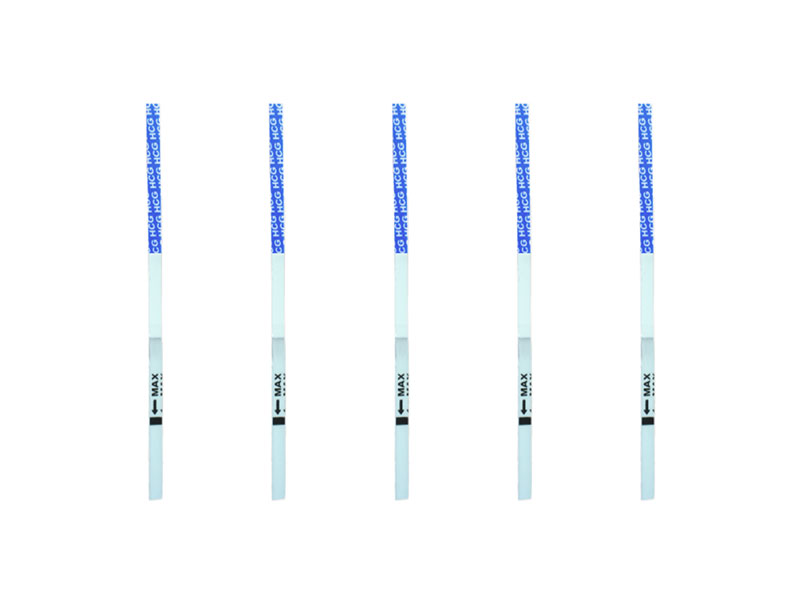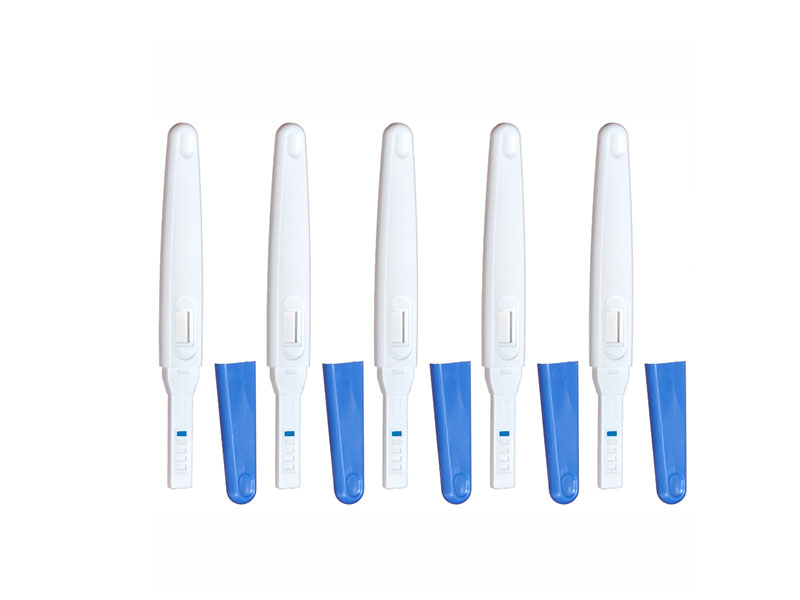Which pregnancy test should I choose?

Knowing you're pregnant as early as possible is extremely important for both your peace of mind and the proper support of your pregnancy. Although there are several early pregnancy symptoms, the only way to know for sure is by taking a pregnancy test.
But what is the best pregnancy test and how do you choose the right one?
There are 3 types of HomeTest.gr pregnancy tests:
- Digital pregnancy tests
- Pregnancy test strips
- Midstream pregnancy tests
Let's go through everything you need to know.
How do pregnancy tests work?
Pregnancy tests work by detecting the hormone HCG (beta-hCG) in a woman’s urine. At the start of pregnancy, this hormone rises gradually, and the test can detect it even in early stages (one day before a missed period or even earlier), depending on the test's sensitivity.
If the test is done on the first day of delay, accuracy exceeds 98%. In short, you can know you're pregnant from the very first weeks.
Which test detects pregnancy earliest?
All pregnancy tests can detect pregnancy from the first day of missed period. However, some are called early detection pregnancy tests and can confirm pregnancy even sooner, as they are highly sensitive and detect hCG at very low levels.
The most sensitive pregnancy test can detect pregnancy even 5 days before your expected period. However, this doesn’t always make it the most accurate, since hCG does not rise at the same rate in every woman or pregnancy. So testing too early may yield a false negative because hormone levels are still low.
What is the most reliable pregnancy test?
Let’s start with the basics.
There’s no difference in reliability between the three types of tests. All three types are equally accurate. They are all manufactured with the same high-quality standards that define HomeTest products.
Whichever type you choose, once it’s positive, the result will be the same. What matters is detecting hCG in early pregnancy.
So, while sensitivity is the same, the difference lies in ease of use and user preference. With HomeTest, the real question isn’t which test is reliable, but which one suits your needs.
So, which type should I choose?
Let’s compare them so you can decide what fits you best.
Digital pregnancy test
Digital tests include:

They consist of a reusable digital reader and disposable sticks.
Watch how to use digital pregnancy tests here:
They’re the most advanced technology-wise, simple to use (either dip or place directly in urine flow), and easy to read as they interpret the results for you with a YES+ or NO- message in just 3 minutes. It’s the fastest test.
If you’ve used analog tests before and felt unsure of the result, digital tests leave no room for doubt.
Digital pregnancy tests are designed to detect appropriate hCG levels on the first day of a missed period — not earlier. That’s because these tests don’t allow you to monitor hCG progression like analog tests do.
They’re ideal if you don’t feel anxious before your expected period and want a clear, immediate answer.
Like midstream tests, digital ones are perfect for non-private settings like work, since you can use them directly in the urine stream.
They are the most expensive type, although HomeTest allows you to buy the digital reader once and just replace the sticks, saving money in the long run.
Pregnancy test strips
These are:

Strips are small, easy to use, and require urine collection in a disposable cup (not necessarily sterile).
Watch how to use them here:
You’ll choose them if you want to keep your purchase cost low. They’re the most economical option due to their minimal design without plastic casing. If you're looking for a cheap pregnancy test online, this is ideal.
If you want to know as early as possible, these analog strips are great — they may show a positive result 3–4 days before your period (sometimes even earlier). Plus, continuing to test daily will show whether the pregnancy is progressing, as the test line becomes darker day by day.
Just note that an early positive may indicate a biochemical pregnancy — one that starts but doesn’t progress. With daily testing, you might see a fading line, signaling the pregnancy is not continuing normally.
Strips must be dipped in urine and aren’t ideal for users who dislike using a collection cup. For those cases, the other two types may be better.
Midstream pregnancy tests
These are:

Midstream tests come with a plastic case and cap. They can be used either by dipping or placing them directly in the urine stream.
Choose these if you want all the benefits of test strips, but also want the convenience of direct usage without a collection cup.
Watch how to use them here:
They’re analog like the strips, showing lines you interpret yourself. This lets you monitor hCG levels just like strips do.
Because of their dual use, they’re ideal for workplaces or public spaces where you prefer not to use a cup — or simply for users who find dipping inconvenient.
In summary, choosing a pregnancy test depends on your budget, reading preference, and usage circumstances.
The results are the same across all types — what varies is the display format, usability, and price. If you're looking for affordability, strips are the way to go. If you want simplicity and a clear result, go with digital.
See all HomeTest pregnancy tests, known for their top accuracy and reliability — on par or better than pharmacy tests.
Of course, we’re here to help with any questions you may have about our tests!
0 comment(s)